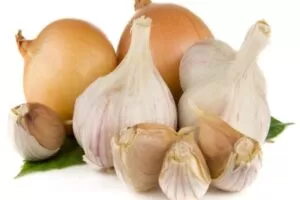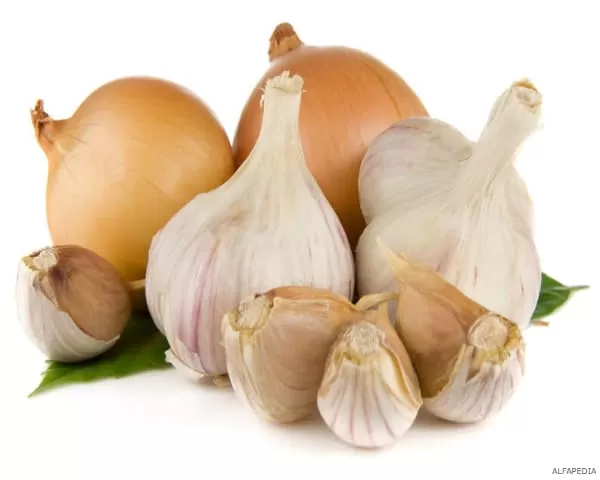Origin and History of Garlic
Garlic is believed to have originated in Central Asia, South Asia or Southwest Siberia. There is some debate about the origin of this herb. It is one of the oldest crops in the world. Garlic lovers brought the pungent herb to Egypt, Pakistan, India and China. Crusaders brought garlic to Europe. Later, Spanish, French and Portuguese settlers introduced garlic to the Americas. The name garlic comes from garleac, an old Anglo-Saxon word meaning “spear leek”.
Garlic is believed to be descended from Allium longicuspis, a wild strain of Asian garlic, but its origins are still in doubt. It is from the lily family (Liliaceae) and is related to onions, leeks, scallions, and shallots. Garlic consumption in the United States has tripled since the 1990s, with more people discovering the delicious properties of this bulb. Worldwide, there are more than 2.5 million acres of garlic cultivation! That’s a lot of garlic.
This pungent herb is one of the oldest cultivated plants. It was worshipped by the Egyptians as a god and used as local currency. Clay bulbs and garlic were placed in Egyptian tombs with the deceased. Archaeologists are unsure whether the clay bulbs were intended as funds for the afterlife or as idols to appease the gods. In addition, garlic was used to pay and feed workers and slaves in the great pyramids. The bulb was so popular among those who worked in the pyramids that garlic shortages caused work stoppages.
A failure of the garlic harvest, due to flooding of the Nile, caused one of only two recorded Egyptian slave revolts. Garlic as currency is not necessarily an ancient idea; some people have been found to be easily bribed with a basket full of aromatic bulbs. Despite its reputation for warding off evil and its use as a medicinal herb, garlic was considered too coarse and common for the refined palates of the upper class. Only the rough lower classes could fill their bellies with garlic; it would upset the delicate constitutions of the rich and powerful.
Egyptian priests worshiped garlic, but actively avoided cooking and eating the fragrant cloves. Other cultures also considered garlic too pungent for religious institutions. Greeks who wished to enter the temple of Cybele had to pass a garlic breath test. Those who ate garlic were not allowed entry. In ancient India, the upper crust was denied the pleasure of the pungent herb because of its strong odor and association with commoners.
Similarly, gentlemen who reeked of garlic at the court of King Alfonso of Castile were expelled from society for a week. In England, garlic breath was also considered totally unsuitable for refined ladies and gentlemen who wished to court them. Many Americans adopted the English attitude and did not embrace garlic until the 1940s. Until then, it was considered an ethnic ingredient and was known by slang terms such as “Italian perfume.”
Garlic was both celebrated and condemned for the belief that it could inflame the passions. Tibetan monks, widows and adolescents were sometimes forbidden to consume the stimulating herb. Chinese physicians prescribed garlic for men with “intimacy problems.” Brides and grooms placed garlic cloves in their buttonholes to ensure a happy honeymoon. Unfaithful Egyptian husbands chewed garlic on their way home from their mistresses to hide the smell of another woman. With all these garlic antidotes, is there any wonder why an Italian dinner is considered a romantic date?
Garlic also inspired literary passion. The aromatic bulb is mentioned in ancient Egyptian, Greek, Indian and Chinese writings, as well as in the Bible, Talmud and Koran. Greek, Egyptian, Chinese and European medicinal texts cite garlic as a cure for many ailments, including impotence, scorpion stings, heart disease, lack of energy and the black plague.
Properties of Garlic
- Garlic is part of the onion family and the ‘bulb’ of this herb usually consists of 10-20 smaller sections called ‘cloves’. Each small clove is an inexhaustible source of flavor and medicinal properties.
- Each 100 grams of garlic will serve you with about 150 calories, 33 grams of carbohydrates, 6.36 grams of protein. Garlic is also enriched with vitamin B1, B2, B3, B6, folic acid, vitamin C, calcium, iron, magnesium, manganese, phosphorus, potassium, sodium and zinc. Garlic is also enriched with vitamin B1, B2, B3, B6, folic acid.
- Garlic contains fructose chains called inulin, sulfur compounds, phenols, proteins, fiber, free amino acids, saponins and minerals and vitamins. Inulin is NOT the same as high fructose corn syrup. Inulin is a soluble fiber made of long strings of fructose.
- Your body cannot break down these fructose strings; instead, they are used as food for beneficial bacteria in the gut. Garlic has 12.5 grams of inulin and 5.0 grams of oligofructose per 100 grams of fresh garlic. Garlic compounds such as diallyl sulfides and diallyl disulfides, which are active components of garlic, have anti-inflammatory and antimutagenic activities.
Characteristics of Garlic
- It is a plant with long, flat, grass-like leaves and a papery hood around the flowers. The greenish-white or pinkish-white flowers are clustered at the end of a long stem.
- The stem rises directly from the flower bulb, which is the part of the plant used for food and medicine. The bulb is composed of many smaller bulbs covered with a papery skin known as a clove.
- Although garlic is known as the “stinking rose,” it is actually a member of the lily family.
- The most active components of fresh garlic are an amino acid called alliin and an enzyme called alliinase.
- When a garlic clove is chewed, minced, bruised or cut, these compounds mix to form allicin, which is responsible for garlic’s strong odor.
Benefits and Contraindications of Garlic
The Blood Purifier
Tired of covering those pimples with concealer every morning? It’s time to address the cause of acne by purifying the blood from the inside for healthy skin on the outside. Take two cloves of raw garlic with some warm water every day, early in the morning and consume plenty of water throughout the day.
If you are looking to shed a few pounds, squeeze the juice of half a lemon into a glass of warm water and drink it with 2 cloves of garlic in the mornings. The garlic will help cleanse your system and flush out toxins.
Cold and Flu
Garlic will give you relief from that nagging cold and flu (yes, they absolutely love you and never want to leave). Taking 2-3 cloves of raw or cooked garlic a day or drinking some garlic tea (with a touch of honey or ginger to lift the flavor) will not only soothe the stuffy nose and cure the cold, but will also boost your immunity against these frequent visitors over time.
According to Dr. Shikha Sharma, a Delhi-based health and wellness expert and founder of Nutrihealth, “One of the earliest uses of garlic was by carnivores because it was believed that meat could cause an infection that garlic could fight body. She added, “Garlic can be added to hot stews, broths and soups to fight sinusitis, colds and flu. And garlic is best had in its raw state.”
Prevention of Heart Disease
Daily consumption of garlic (in food or raw) helps reduce cholesterol levels due to the antioxidant properties of allicin. It is also immensely beneficial in regulating blood pressure and blood sugar levels. It is essential to remember that the sulfur-containing compound Allicin tends to lose its medicinal properties when garlic is cooked whole. It is essential to consume raw or semi-cooked garlic to obtain any of its benefits.
Antibacterial and Antiparasitic
Garlic is one of the best-kept medicinal treasures of the past era: it has been used as an antibiotic to treat bacterial, fungal and parasitic infections for the past 7,000 years. Studies suggest that diluted garlic extract helps children with tapeworm infections. A garlic-based mouthwash may not look like fresh, minty breath, but a very small amount of its extracts is enough to ward off cavity-causing bacteria.
Cancer Prevention
Several studies have indicated an association between daily garlic consumption and the prevention of stomach and colorectal cancer. It is said to strengthen the body’s immunity against cancer.
For Skin and Hair
The invigorating properties of garlic protect the skin from the effect of free radicals and slow the depletion of collagen, which leads to loss of elasticity in aging skin. Applied topically, garlic works wonders on skin infected with fungal infections and provides relief from skin ailments such as eczema. It is also an effective remedy for fungal infections such as athlete’s foot and ringworm.
We all know about the wonders of onion for hair, but its sibling, garlic is no less of a hero for your thinning mane. Well, it’s time to surprise. Rubbing crushed garlic extract on the scalp or massaging with garlic-infused oil is known to prevent and even reverse hair loss.
Chips
Many of the amazing uses of garlic were forgotten in recent times, but users (and believers) still vouch for the lesser-known benefits. One of them is against stubborn splinters. Place a piece of chopped garlic on the cut splinter and cover with a bandage, and presto! Goodbye splinter.
Nutritional Value of Garlic
Nutrients in a 9 Gram Garlic Clove: A 9 gram garlic clove has 13 calories, 3 grams of carbohydrates, 1 gram of protein and 0.4 grams of fat (mainly omega-6 fats). It has an extremely low glycemic index load (1) and is considered very anti-inflammatory (all USDA nutritional information).
- Potassium 36 mg
- Phosphorus 14 mg
- Calcium 16 mg
- Vitamin C 2.8 mg
- Magnesium 2.2 mg
- Choline 2.1 mg
- Selenium 1.3 mg
- Lutein and zeaxanthin 1.4 mcg
- Vitamin A 0.8 mg
- Folate 0.3 mg
- Manganese 0.2 mg
- Iron 0.2 mg
- Vitamin K 0.2 mg
Garlic also contains small amounts of zinc (0.1 mg), pantothenic acid (0.1 mg), niacin (0.1 mg) and B6 (o.1 mg).
Scientific Name of Garlic
- Preferred Scientific Name: Allium sativum
- Preferred Common Name: Garlic
- Taxonomic Tree of Garlic
- Domain: Eukaryote
- Kingdom: Plantae
- Phylum: Spermatophyta
- Subphylum: Angiosperms
- Class: monocotyledons
Tender Garlic
To consume freshly harvested tender garlic, you should generally wait until mid-July to early August, depending on your climate. At this time the bulbs have just been dug up, and it is the perfect time to eat them tender and fresh.
White Garlic
German white garlic produces large bulbs, about 9 centimeters in diameter, with 4 to 6 large cloves wrapped around a tough central stalk. The bulb is covered with shiny ivory-white papery skins. Each tooth is loosely covered by a whitish, easy-to-peel skin with purple stripes. In colder climates, the clove wrapper color will be a deeper red. German white garlic offers a strong garlic flavor with a lasting heat that softens when cooked.
German white garlic is available in late summer and early spring. German white garlic is a very large, hard-necked, porcelain type botanically classified as Allium sativum. This variety is widely grown both for its garlic scapes, which are false flower stalks that can be eaten as vegetables, and for its silvery, papery-white bulbs. German white garlic is sometimes called northern white garlic and extra hardy German.
German white garlic is rich in manganese and vitamin B6 and is a good source of vitamin C and copper. It also contains selenium, phosphorus, vitamin B1 and calcium. German white garlic is one of several porcelain varieties known to have higher levels of beneficial sulfur compounds. Alliinase and alliin combine to produce allicin when garlic is crushed. This powerful compound gives garlic its pungent odor and its antioxidant, cardiovascular, immunostimulant and antibiotic benefits.
Black Garlic
Black garlic bulbs are small to medium, and the paper-thin outer wrappers are indented and browned, looking old or burned. Black opal cloves have a gelatinous texture of fresh, dried fruit. Black garlic is very hard when eaten raw and does not carry heat. It has a mild, sweet, syrupy flavor with a hint of molasses and undertones of tamarind and soy sauce. Black garlic is available year-round.
Black garlic is not its own variety of garlic. Botanically classified as Allium sativum, black garlic is a common garlic that is placed in a curing process involving heat and humidity over a period of one month using specially designed machines and environmentally controlled temperatures. These engineered conditions also allow the Maillard reaction to occur, which is the chemical process that produces new flavor combinations that allow black garlic to have a mild, sweet flavor without heat.
Black garlic has grown in popularity among high-end restaurants for its unique flavors and is also known for not leaving a strong garlic odor on the breath. Black garlic contains twice as many antioxidants as regular garlic due to the curing process and also contains some potassium, vitamin C, copper and iron. Black garlic can be consumed raw and used in cooked applications such as roasting, sautéing and baking. It is an ideal ingredient for making purees, dressings, rubs, marinades and rich, complex sauces.
Black garlic can be roasted and spread on bread as a sweet topping. It can also be sautéed in oil, chopped or diced and added directly to pizzas, pastas, rice and legume-based dishes. In addition to savory dishes, black garlic can be used in the preparation of innovative desserts such as ice cream and chocolate-based dishes. Black garlic goes well with eggplants, mushrooms, tomatoes, cheese, roast pork, sausages, grilled white fish and seafood, smoked meats, ginger, chocolate, chilies, herbs such as basil, parsley and cilantro, truffles, olives, brown sugar and sesame. oil. Black garlic will keep for up to one month when stored sealed in a cool, dry place. Once opened, store in an airtight container in the refrigerator.
Healing Power of Garlic
Ancient Indians, Chinese, Egyptians, Greeks, Romans and other peoples have used garlic for thousands of years, both as food and as medicine. One of the most famous uses of garlic was during the Middle Ages, when it was reputed to have been highly effective against the plague.
As early as 1858, Louis Pasteur formally studied and recorded the antibiotic properties of garlic. Dr. Albert Schweitzer used the herb to successfully treat cholera, typhoid and dysentery in Africa in the 1950s. Before antibiotics were widely available, garlic was used as a treatment for battle wounds during the two world wars.
Garlic can be used in the treatment of a variety of bacterial, viral and fungal infections. It has been shown to be effective against staphylococci, streptococci, E. coli, Salmonella, Vibrio cholera, H. pylori, Candida albicans and other microorganisms. Garlic also helps prevent heart disease and stroke. Current studies show that garlic can improve immune function and may even help in the prevention of cancer. To be beneficial in chronic conditions, garlic must be used daily for an extended period of time.
Garlic as an Antibiotic
Eating garlic is good for helping the body’s immune system resist infection. While garlic is not as strong as modern antibiotics, it is believed to kill some strains of bacteria that have become resistant to antibiotics. Studies have shown that garlic treats fungal infections and can kill many of the viruses responsible for colds and flu.
While daily garlic consumption was once highly recommended for people with HIV, the National Institutes of Health (NIH) reported in 2002 that garlic supplements greatly reduced levels of saquinavir, an HIV protease inhibitor, in patients’ blood. The NIH began warning patients using garlic to control cholesterol levels who were also using saquinavir or combination therapies that garlic could interfere with their effectiveness.
Modern physicians have been reconsidering the causes of many diseases. They have discovered that bacteria and viruses can be the cause of diseases that were not previously thought to be caused by infections. This includes gastric ulcers, colitis and Kaposi’s sarcoma. Garlic may be useful in the treatment or prevention of these due to its antimicrobial properties.
Garlic as an Insecticide
You either seem to love garlic or loathe it. Insects seem to have the same reaction. It doesn’t seem to bother some of them, but for others, garlic is as repellent as it is to a vampire. Controlling garden pests with garlic is a non-toxic, low-cost control and can be done quite simply. Using garlic for pest control, there are a couple of ways to use garlic as pest control. The most common is to make a garlic spray for pests.
Examples of some of the unwanted insects that can be controlled with a garlic spray include: aphids, ants, beetles, caterpillars, caterpillars, armyworms, slugs, termites, whiteflies from organic matter incorporated into it.
Of course, you can buy a garlic spray that comes in a convenient atomizing sprayer and is usually mixed with other natural products such as eucalyptus oil, potassium soap or pyrethrum, but making your own spray is a less expensive and very simple project to control pests with garlic.
How to Make a Garlic Pest Spray ?
There are many recipes on the Internet, but the basic recipe for a garlic spray is as follows: First, make a concentrated garlic extract.
- Crush four or five cloves of garlic in a food processor, blender or with a mortar and pestle. Add to this, one quart of water and four or five drops of dishwashing soap, preferably a natural, biodegradable soap.
- Strain the mixture through a cheesecloth twice to remove any bits of garlic that may clog the spray bottle. Store the concentrated garlic in a glass bottle with a tight-fitting lid.
- To make garlic spray, simply dilute your concentrate with 2 ½ cups of water, pour it into a spray bottle or pressure sprayer and you’re ready to do some damage.
- Keep in mind that this natural pesticide won’t last forever.
- It is best to use it soon after preparation, as the mixture will lose its potency over time. To apply garlic spray, spray the plant once a week to protect against pests or twice a week if it rains heavily.
Do not spray when harvest time is approaching unless you want your lettuce to have a garlic flavor. Also, garlic spray is a broad-spectrum pesticide, so only spray the parts of plants that are infested so that you decrease the risk of harming beneficial insects.
Another way to use garlic for pest control is to intercrop it. That just means planting garlic between other crops. While garlic does an excellent job of repelling pests on many plants, avoid planting near legumes, peas and potatoes.
Garlic as a Medicinal Plant
The following are examples of some scientific studies published in peer-reviewed academic journals on the therapeutic benefits (or not) of garlic, to determine its healing powers.
Lung Cancer Risk
People who ate raw garlic at least twice a week during the 7-year study period had a 44 percent lower risk of developing lung cancer, according to a study conducted at the Jiangsu Provincial Center for Disease Control and Prevention in China.
The researchers, who published their study in the journal Cancer Prevention Research, conducted face-to-face interviews with 1,424 lung cancer patients and 4,543 healthy people. They were asked about their diet and lifestyle, including questions about smoking and how often they ate garlic.
The study authors wrote, “A protective association was observed between raw garlic intake and lung cancer with a dose-response pattern, suggesting that garlic may serve as a chemopreventive agent for lung cancer.”
Brain Cancer
Organo-sulfur compounds found in garlic have been identified as effective in killing cells in glioblastomas, a deadly type of brain tumor. Scientists at the Medical University of South Carolina reported in the journal Cancer that three pure organosulfur compounds in garlic, DAS, DADS and DATS, “demonstrated efficacy in eradicating brain cancer cells, but DATS proved to be the most effective.”
Co-author Ray Swapan, Ph.D., said, “This research highlights the great promise of plant-derived compounds as a natural medicine to control the malignant growth of human brain tumor cells. Further studies in animal models of brain tumors are needed before this therapeutic strategy can be applied to brain tumor patients.
Hip Osteoarthritis
Women whose diets were rich in allium vegetables had lower levels of osteoarthritis, reported a team from King’s College London and the University of East Anglia, both in England, in the journal BMC Musculokeletal Disorders. Examples of allium vegetables include garlic, leeks, shallots, onions and rakkyo.
The study authors said their findings not only highlighted the possible impact of diet on osteoarthritis outcomes, but also demonstrated the potential for using compounds that exist in garlic to develop treatments for the disease.
The long-term study, involving more than 1,000 healthy twin girls, found that those whose dietary habits included lots of fruits and vegetables, “particularly alliums such as garlic,” had fewer signs of early osteoarthritis in the hip joint.
Potentially a Powerful Antibiotic
Diallyl sulfide, a compound in garlic, was 100 times more effective than two popular antibiotics in fighting Campylobacter bacteria, according to a study published in the Journal of Antimicrobial Chemotherapy. Campylobacter bacteria are one of the most common causes of intestinal infections.
Lead author Dr. Xiaonan Lu, Washington State University, said, “This work is very exciting to me because it shows that this compound has the potential to reduce disease-causing bacteria in the environment and in our food supply.”
Heart Protection
Garlic may contain heart-protective chemicals. Diallyl trisulfide, a component of garlic oil, helps protect the heart during heart surgery and after a heart attack, researchers at Emory University School of Medicine found. They also believe diallyl trisulfide could be used as a treatment for heart failure. Hydrogen sulfide gas has been shown to protect the heart from damage.
However, it is a volatile compound and difficult to administer as a therapy. Because of this, scientists decided to focus on dialysyl trisulfide, a component of garlic oil, as a safer way to deliver the benefits of hydrogen sulfide to the heart. In experiments with laboratory mice, the team found that, after a heart attack, mice that had received diallyl sulfide had 61 percent less heart damage in the area at risk compared to untreated mice.
In another study, published in the Journal of Agricultural and Food Chemistry, scientists found that garlic oil may help protect patients with diabetes from cardiomyopathy. Cardiomyopathy is the leading cause of death among patients with diabetes. It is a chronic disease of the myocardium (heart muscle), which is abnormally thickened, enlarged and/or stiff. The team fed diabetic lab rats either garlic oil or corn oil. Those fed garlic oil experienced significantly more changes associated with protection against heart damage compared to animals fed corn oil.
The study authors wrote, “In conclusion, garlic oil possesses significant potential to protect hearts from diabetes-induced cardiomyopathy”. Human studies will be necessary to confirm the results of this study.
High Cholesterol and High Blood Pressure
Researchers at Ankara University investigated the effects of garlic extract supplementation on the blood lipid (fat) profile of patients with high blood cholesterol. Their study was published in the Journal of Nutritional Biochemistry. The study involved 23 volunteers, all with high cholesterol; 13 of them also had high blood pressure. They were divided into two groups:
The normotensive group with high cholesterol (normal blood pressure). The hypertensive group with high cholesterol (high blood pressure). They took garlic extract supplements for 4 months and blood lipid parameters, as well as kidney and liver function, were checked regularly.
At the end of the 4 months, the researchers concluded that “…garlic extract supplementation improves the blood lipid profile, strengthens the antioxidant potential of the blood, and causes significant reductions in systolic and diastolic blood pressure.
It also leads to a decrease in the level of oxidation product (MDA) in blood samples, which demonstrates reduced oxidation reactions in the body. In other words, garlic extract supplements reduced high cholesterol levels and also blood pressure in patients with hypertension. The scientists added that theirs was a small study: more work is needed.
Prostate Cancer
Physicians from the Department of Urology, China-Japan Friendship Hospital, Beijing, China, conducted a study to evaluate the relationship between Allium vegetable consumption and prostate cancer risk. They pooled and analyzed studies published up to May 2013 and reported their findings in the Asian Pacific Journal of Cancer Prevention.
The study authors concluded that “Allium vegetables, especially garlic intake, are associated with a lower risk of prostate cancer”. The team also commented that because there are not many relevant studies, more well-designed prospective studies should be conducted to confirm their findings.
Alcohol-Induced Liver Injury
Alcohol-induced liver injury is caused by long-term excessive consumption of alcoholic beverages. Scientists from the Institute of Toxicology, School of Public Health, Shandong University, China, wanted to determine whether diallyl disulfide (DADS), an organosulfur compound derived from garlic, could have protective effects against ethanol-induced oxidative stress.
Their study was published in Biochimica et Biophysica Acta. The researchers concluded that DADS could help protect against ethanol-induced liver injury.
Premature Delivery
Microbial infections during pregnancy increase a woman’s risk of preterm delivery. Scientists at the Division of Epidemiology, Norwegian Institute of Public Health, studied what impact food might have on antimicrobial infections and the risk of preterm birth. The study and its findings were published in the Journal of Nutrition.
Ronny Myhre and colleagues focused on the effects of Alliums and dried fruits, because a literature search identified these two foods as showing the most promise for reducing the risk of preterm delivery. The team investigated the intake of dried fruits and Alliums among 18,888 women in the Norwegian mother-infant cohort, of whom 5 percent (950) underwent spontaneous PTD (preterm delivery).
The study authors concluded, “Intake of foods with antimicrobial and prebiotic compounds may be important in reducing the risk of spontaneous PTD. In particular, garlic was associated with a lower overall risk of spontaneous PTD.”
Garlic and the Common Cold
A team of researchers from the St. Joseph Family Medicine Residency in St. Joseph, Indiana, conducted a study entitled “Treatment of the Common Cold in Children and Adults,” published in American Family Physician. They reported that “prophylactic use of garlic can decrease the frequency of colds in adults, but has no effect on the duration of symptoms.” Prophylactic use means using it regularly to prevent illness.
While there is some research suggesting that raw garlic has the most benefits, other studies have looked at overall intake of allium, both raw and cooked, and have found benefits. Therefore, you can enjoy garlic in a variety of ways to take advantage of its benefits.
How to Consume Garlic ?
Five easy ways to eat raw garlic:
- By the Spoonful: this one is pretty obvious, but many people just chop it up, put it on a spoon and eat that daily dose of raw garlic power. Not everyone can handle the raw taste, but if you can, this is a great way to eat raw garlic and you can avoid garlic breath during the day by eating your daily garlic at night before bed.
- Sauce: adding minced garlic to sauce is very easy and the flavor complements many different sauces, especially spicier ones. Chopping or cutting a clove as needed is the way to go, as you will get less of a boost if you prepare a large batch in advance and let it sit for days.
- Pesto: Garlic and pesto go hand in hand, so this is a natural choice. If you don’t like to make your own pesto, you can simply use store bought pesto and chop up a clove and blend it. The key is not to heat/cook the garlic and use it quickly after chopping or mincing it, with the pesto setting The bill perfectly.
- Salad: thin slices of garlic can be added directly to salads or it can be finely chopped and mixed with salad dressing before putting it in the salad. Garlic goes well with Ranch dressing and vinaigrettes, but you can definitely use your imagination here.
- Toast: you’ll want to mince or crush your garlic and then spread it on toast after it’s toasted. Toasting the garlic bread itself is not as useful from a health perspective, as the heat from toasting can reduce the impact of allicin. A popular technique is to mince the garlic and mix it with butter, spreading that healthy, flavorful goodness on toast and eating raw garlic in its healthiest form.
How to Make Garlic Sauce ?
Ingredients
- 4 cups sunflower oil, avocado oil or canola oil, refrigerated
- 1/2 cup peeled garlic cloves
- 1/2 cup lemon juice, divided
- 1/2 cup divided ice water
- 1 3/4 teaspoon salt
Nutritional Information: Assuming the recipe yields about 5 cups (it is never exactly the same amount from batch to batch), you will end up with about 80 tablespoons of sauce.
The serving size is about 2 tablespoons per serving, which equals 196 calories per serving.
Instructions
- Before you begin, place the oil in the freezer or refrigerator so it is cold, but still liquid. While the oil is cooling, remove the ends of the garlic cloves, split them in half and remove the green layers inside.
- In a food processor, combine garlic cloves, salt, 1/4 cup lemon juice and 1/4 cup ice water.
- Garlic and water in food processor.
- Process until smooth, then stop and scrape down sides of food processor with a spatula.
- Turn food processor back on and drizzle cooled oil over the top as slowly as possible, one cup at a time.
- If you don’t have a steady hand, I suggest putting the oil in a squeeze bottle and drizzling it that way. After each cup of oil, add 1 tablespoon of lemon juice and cold water.
- Scrape down the sides of the food processor as needed. Make sure your processor does not get too hot, as this can cause your sauce to separate.
- Just add oil until you have reached the texture you want; you may only need 3 1/2 cups to achieve the right texture. The end result should resemble a smooth mayonnaise.
- This recipe makes about 5 cups of sauce; one serving is calculated as about 2 tablespoons. Store toum in an airtight container in the refrigerator.
- This recipe is a fairly large batch, but should last up to 4 weeks and can be used on many things. You’ll be happy to have more. enjoy!
How to Make Garlic Bread ?
Fresh minced garlic is key to these flavor-packed crispy slices.
Ingredients
- 1/2 cup melted butter
- 3 to 4 cloves garlic, minced
- 1 loaf (1 pound) French bread, halved lengthwise
- 2 tablespoons chopped fresh parsley
Directions
- In a small bowl, combine butter and garlic. Brush over cut sides of bread; sprinkle with parsley. Place, cut side up, on a baking sheet.
- Bake at 350° for 8 minutes. Broil 4 to 6 inches from heat for 2 minutes or until golden brown. Cut into 2-inch slices. Serve warm.
Nutritional Information
- 1 piece: 258 calories, 13 g fat (7 g saturated fat), 31 mg cholesterol, 462 mg sodium, 30 g carbohydrate (1 g sugars, 2 g fiber), 5 g protein.
How to Make Black Garlic ?
- Black garlic can be found on menus everywhere, but this unique ingredient is nothing new. It has been used for flavor and medicinal purposes and in a variety of Asian cuisines for centuries.
- Black garlic is simply the product of aging regular garlic bulbs over the course of weeks or months. It requires strictly regulated temperature and humidity to achieve its sticky consistency.
- With a milder, molasses-like flavor, it is a more delicate choice than the raw bulb. It also has added health benefits, including twice the amount of antioxidants as in its regular form.
- It is versatile and can be substituted for regular garlic in most recipes. It is a beautiful addition to any cheese plate, bruschetta, chicken dishes or even as a pizza topping. It also gives that extra kick to a homemade vinaigrette.
Note that it has a milder flavor, so we recommend, as always, tasting it as you add.
- The process of making black garlic is less difficult than lengthy. It can age up to 60 days, but will be ready to use after three weeks.
- There are quite a few do-it-yourself methods. If you plan to make black garlic frequently, buying a fermentation box can be a great investment.
- However, the best approach without additional cookware is to age your bulbs in a slow cooker or rice cooker. The process is easy, but requires patience to achieve that super sweet result.
- As an added caveat, you will have that delicious garlic smell wafting through your kitchen throughout the cooking process. So be prepared for your stomach to grumble.
Ingredients
- 6 to 7 whole (unpeeled garlic bulbs)
Steps to make it
- Gather the ingredients.
- Remove the dirt from the garlic bulbs by rubbing the bulbs gently with the rough side of a clean, unused sponge. Do not remove the bulb cloves and do not wash or wet the bulbs as this will disrupt the aging process.
- Set your slow cooker or rice cooker to warm (not low). The warm setting provides the proper temperature and humidity for aging without cooking. Note: even if the garlic is not cooking, there will be a strong garlic smell throughout the process.
- Place whole peeled and unpeeled garlic bulbs in the pot. Do not overload the bulbs. Leave enough space between the bulbs so that they do not touch.
- Allow the bulbs to sit undisturbed on the “warm” setting until the cloves are soft and black (2 to 3 weeks). Check the slow cooker occasionally to make sure the setting is still on “warm”, not “low” and has not turned off.
- When ready, store whole bulbs in an airtight container for up to 3 months. Squeeze out the cloves, as needed.
How to Plant or Sow Garlic ?
Garlic is one of the easiest crops you can grow. In most regions of the country, garlic is planted in the fall. At that time, many summer crops have already been harvested, leaving some space in the garden. Just remember that the garlic bed won’t be available for another type of crop until late next summer, when it’s time to harvest the garlic you planted the previous fall.
Choosing which type of garlic to plant
If you are replanting garlic from your own stock, choose the largest and best heads from the summer crop. If buying, look for garlic sold specifically for planting. Garlic from the produce section in the supermarket may have been treated with a sprout inhibitor to prevent it from growing.
There are several types of garlic
Hardneck varieties of garlic produce a stiff stalk that grows from the center of the bulb. Compared to softneck varieties, they tend to have a more intense flavor, with more variation in flavor between varieties.
They are also hardier, making them a good choice for regions with very cold winters. Once harvested, the bulbs have a somewhat shorter shelf life than softneck varieties.
- Softneck garlic varieties do not produce a rigid central stem. This lists the type of garlic you will find in most supermarkets. It has a relatively mild flavor.
- Softneck garlic is the best choice for regions with mild winters, and is the type to grow if you want to make garlic braids.
- Elephant garlic resembles a giant garlic head and actually belongs to the same genus, Allium. However, it is not a “true” garlic but is more closely related to the leek.
Six Steps to Planting Garlic
- Plan to plant garlic in the fall about four to six weeks before the ground freezes.
- Prepare the soil by loosening it to a depth of at least 8″ and mix in some slow-release granular organic fertilizer.
- Just before planting, break garlic heads into individual cloves, leaving as much of the papery covering on each clove intact as possible.
- Plant cloves 3 “to 4” deep, orienting them so that the pointed ends face up.
- Water gently to settle the soil and then cover the bed with a 4 “to 6” layer of straw. Even if the air temperature drops, the soil will stay warm enough for the newly planted cloves to establish roots before the ground freezes.
- Sometimes you’ll see a few green shoots form in the fall; that’s fine and won’t harm the plants. They will begin to grow in earnest in spring.
Next spring and summer, keep the bed weeded and watered.
Determining when garlic is ready to harvest is one of the hardest parts of growing garlic. If you harvest too early, the cloves will be small and underdeveloped (certainly usable, but not as large and thick as possible).
If you wait too long, as the heads dry out, the cloves will begin to separate and the head will not be tight and firm (not a disaster either, but the cloves will be more vulnerable to rotting and drying, so they will not store). as long).
Topics Related to Vegetables in ALPHAPEDIA
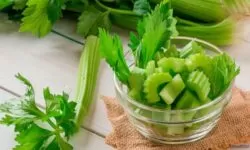
CELERY: Properties, Benefits and Contraindications
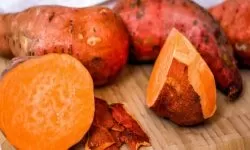
SWEET POTATO: Properties, Benefits, Origin and History
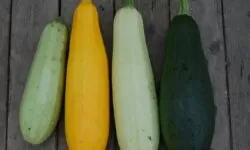
ZUCCHINI: Properties, Benefits and Characteristics
Health and Wellness Issues at ALPHAPEDIA

COCONUT: Benefits, Properties and Contraindications

SWEET POTATO: Properties, Benefits, Origin and History
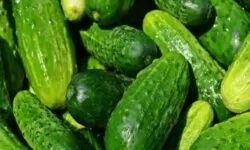
CUCUMBER: Fruit or Vegetable. Benefits and Properties
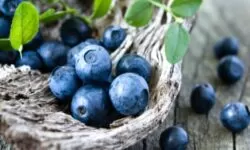
BLUEBERRIES: Benefits, Properties and Contraindications

💚 WHAT IS BASAL METABOLISM ?
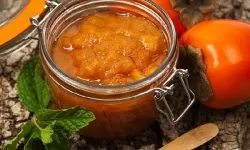
PERSIMMON: Origin, Properties and Benefits
Other Topics of Interest in ALPHAPEDIA

ATHLETIC TRACK DIMENSIONS

FREE APNEA COURSE

DEUTERONOMY 31:8

DOCTORATE IN ANTHROPOLOGY

FREE COSMETOLOGY COURSE

DARK WINE COLOR: Psychology, Meaning and Code
Image, Photo or Drawing of Garlic
